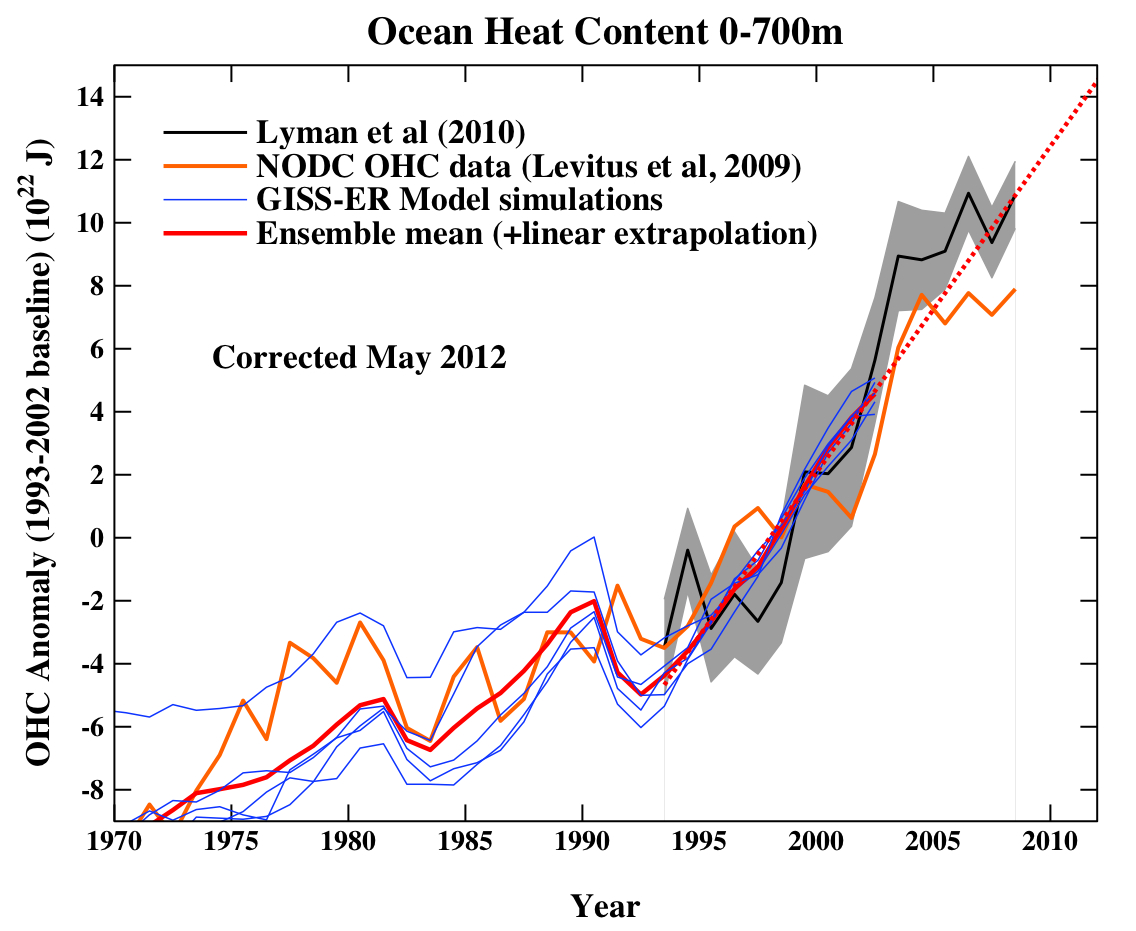 Ocean heat content increases updateJune 1, 2010 - realclimate.orgThere is a new paper in Nature this week on recent trends in ocean heat content from a large group of oceanographers led by John Lyman at PMEL. Their target is the uncertainty surrounding the various efforts to create a homogenised ocean heat content data set that deals appropriately with the various instrument changes and coverage biases that have plagued previous attempts. We have discussed this issue a number of times because of its importance in diagnosing the long term radiative imbalance of the atmosphere. Basically, if there has been more energy coming in at the top than is leaving, then it has to have been going somewhere – and that somewhere is mainly the ocean. (Other reservoirs for this energy, like the land surface or melting ice, are much smaller, and can be neglected for the most part).
The main problem has been that over time the network of XBT probes and CTD casts has been replaced by the Argo float network which has a much greater coverage and more homogeneous instrumentation. However, connecting up the old and new networks, and dealing with specific biases in the XBT probes is difficult. An XBT (eXpendable Bathy-Thermograph) is a probe that is thrown off the ship and whose temperature readings as a function of time are transferred to a profile in depth from knowledge of how fast the probe falls. Unfortunately, this function is a complicated one that depends on the temperature of the water, the depth, the manufacturer of the probe etc. Various groups – working with the same basic data – have shown that there were biases in the XBT associated with incorrect calibrations and have attempted to make better corrections. The latest paper is a consensus effort from many of the people involved in the previous work and shows how robust the recent decades warming of the ocean has been. Indeed, the ‘best estimate’ for the changes in the top 700m seems to be a greater warming than seen in the NODC data and more than even the models were suggesting:
One thing that is interesting to note is that the interannual variability – particularly in the transition period between the two observing systems (1995-2005 say) is very dependent on exactly how you do the corrections, while the longer term trend is robust. This ties in directly with comments by Kevin Trenberth in this recent paper and in an accompanying commentary to the Lyman paper that while the energy budget changes over the long term are explainable, the changes over short time frames are still very difficult to quantify. As usual, this is unlikely to be the very last word on the subject, but this is more evidence that the planet is basically behaving as the scientists think it is. And that isn’t necessarily good news. Industrial biotechnology has the potential to save the planet up to 2.5 billion tons of CO2 emissions per year and support building a sustainable future, a WWF report found. Download
Industrial biotechnology has the potential to save the planet up to 2.5 billion tons of CO2 emissions per year and support building a sustainable future, a WWF report found. |
